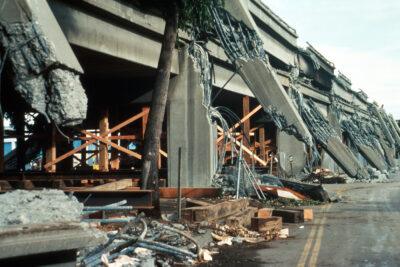
Image source: USGS.gov
With nearly 60 percent of California in an exceptional state of drought since 2011, and farmers in the state’s Central Valley forced to pump groundwater from deep below to irrigate their crops, researchers are suggesting that removing the groundwater could trigger more earthquakes on the nearby San Andreas Fault, according to an article on TakePart.com.
The valley is the state’s agricultural heartland and one of the most productive agricultural areas in the United States. However, it also has 7 million acres under irrigation. Central Valley farmers must pump out water from aquifers below the surface to water their crops.
It takes thousands of years to fill the aquifers but researchers claim that Central Valley reserves are being rapidly depleted because of the irrigation. The UC Center for Hydrologic Modeling at the University of California, Irvine made the following predictions about the Central Valley earlier this year:
If current drought conditions continue for the next several years, Central Valley groundwater levels will fall to historically low levels, with important implications for all Californians. Historically, drought conditions and groundwater depletion in the Central Valley have resulted in land subsidence, exhaustion of some localized groundwater supplies, greater groundwater pumping costs, reductions in groundwater quality, reductions in planted acreage, higher food costs, ecological damage, depletion of river flows, and several other drought and groundwater-depletion related impacts.
(Listen to Off The Grid Radio’s earlier in-depth interview with a UC Davis researcher about the groundwater crisis here.)
New Relocation Manual Helps Average Americans Get Out Of Harms Way Before The Coming Crisis
In short, when there is less water in the aquifers, it means there is less water to hold up the land above them, according to the theory. Already, the land in the Central Valley – near the San Andreas Fault – has begun to sink due to groundwater usage. In some areas the land is sinking by as much as a foot per year, according to a November 2013 United States Geological Survey study.
A 2011 earthquake in Spain that killed nine people was blamed on a depleted aquifer, according to TakePart.
In addition to holding up the land above, there is also evidence that the water in the aquifers has been holding down the earth below, providing a stabilizing force. According to a study published earlier this year in the journal Nature, the groundwater use in the Central Valley is exceeding the replenishment of the aquifer, which is leading to rapid subsidence of the valley floor. The study states, “The volume of groundwater lost over the past century and a half also represents a substantial reduction in mass and a large-scale unburdening of the lithosphere, with significant but unexplored potential impacts on crustal deformation and seismicity.”
Story continues below video
In other words, with a significant portion of the underground matter taken away, the earth can be more likely to bounce, buckle, and break, resulting in more earthquakes.
The researchers looked at data from 500 GPS recorders in the Central Valley and the surrounding mountains to draw their conclusions.
But while some parts of the land can sink, other areas rise.
According to William Hammond, a geologist at the University of Nevada, Reno, and one of the co-authors of the Nature article, “Groundwater pumping unburdens the lithosphere. When you pump that much groundwater, the load gets taken away and the landscape essentially bounces up. The Sierra Nevada is rising more quickly as a result of groundwater pumping in the Great Valley.”
What’s more, it appears that the timing of small earthquakes along the San Andreas Fault could be linked to irrigation pumping by farmers in the Central Valley. The Parkfield section of the San Andreas Fault system, which has been studied extensively, frequently has quakes of more than 1.25 magnitude in late summer and fall. This is, TakePart noted, the same time period when farmers in the Central Valley begin pumping water from the aquifer for irrigation so their crops will survive during the hottest months, especially during a drought.
Hammond says, “That seasonal change means loading and unloading on the lithosphere. The earth flexes up and down, and small earthquakes seem to respond to that.”
He believes that the over usage of groundwater could have a detrimental impact.
“The total number of large quakes won’t change,” Hammond said. “But groundwater depletion might well tweak their timing.”
Do you believe aquifer depletion could cause earthquakes? Write your response in the section below: